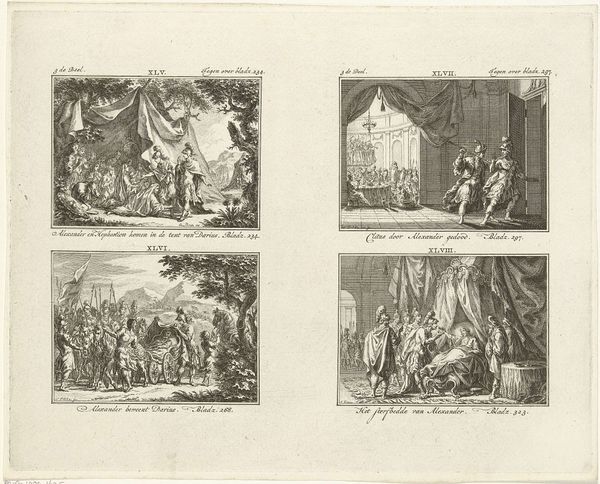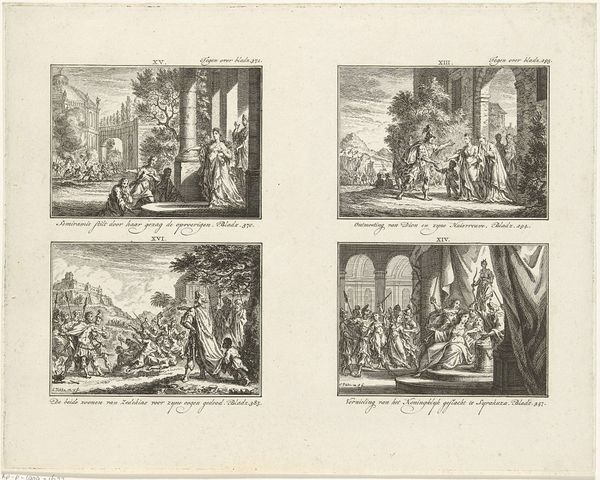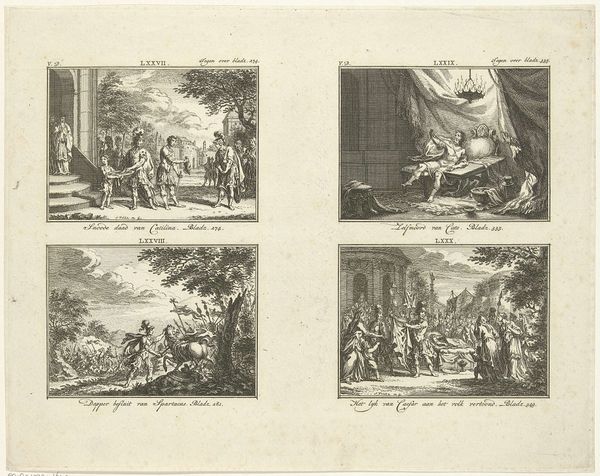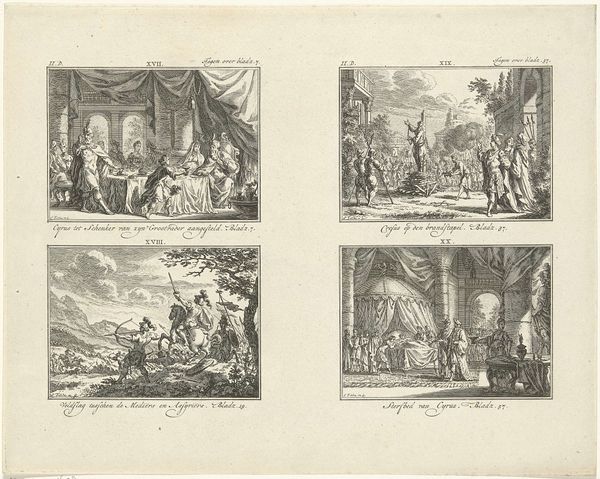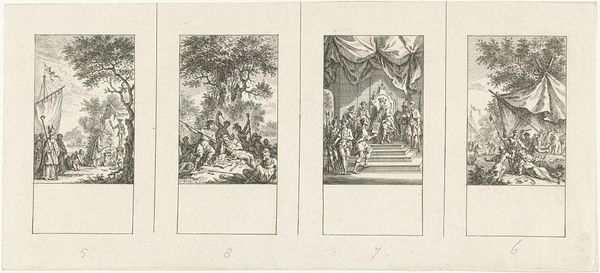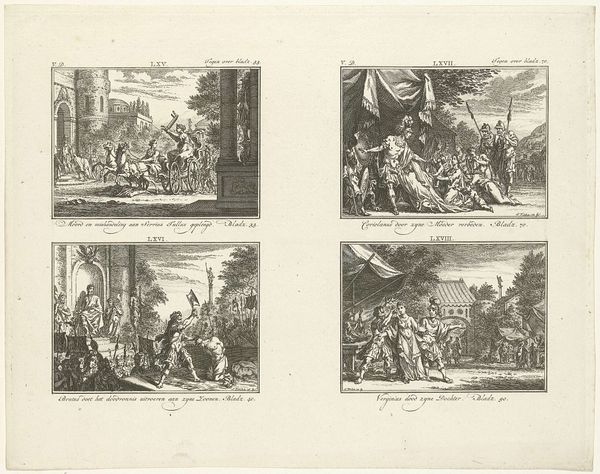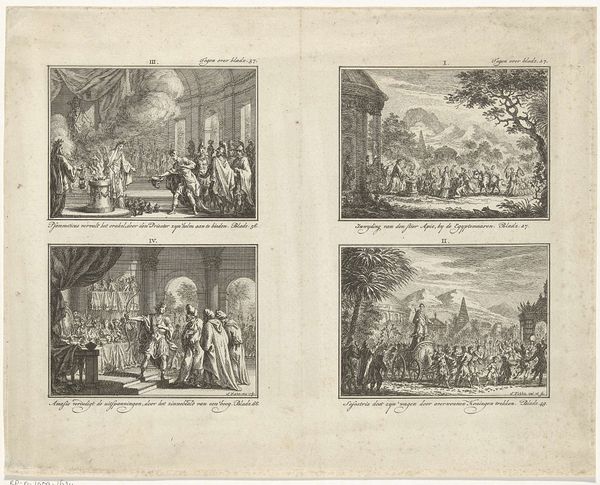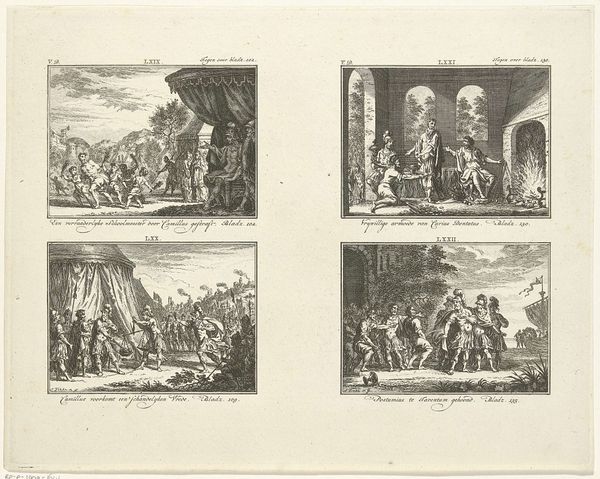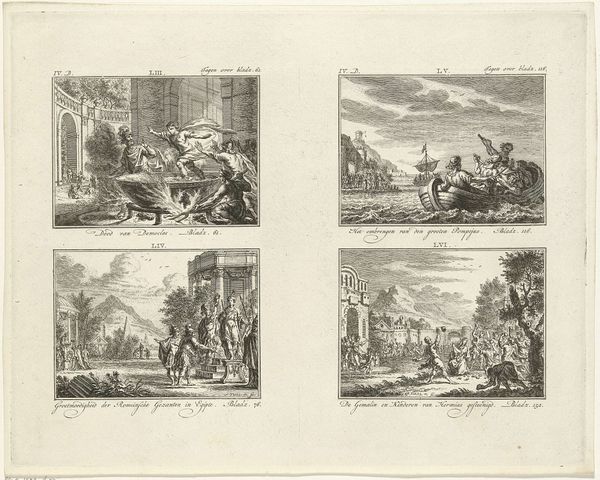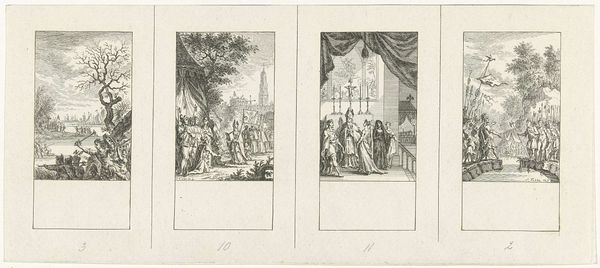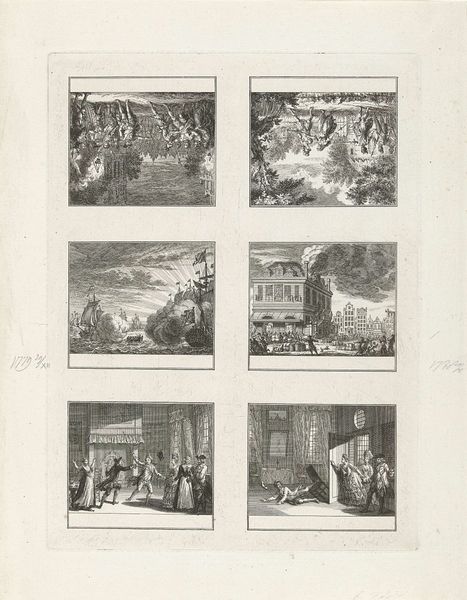
print, engraving
#
baroque
# print
#
history-painting
#
academic-art
#
engraving
Dimensions: height 221 mm, width 283 mm
Copyright: Rijks Museum: Open Domain
Curator: This print, titled "Vier voorstellingen uit de klassieke geschiedenis," presents four scenes from classical history. It was created sometime between 1722 and 1784 by Simon Fokke and is an engraving. What’s your first take, what catches your eye? Editor: Hmm, immediately I see four little dramas unfolding, like tiny theatrical stages all in one frame. The top left reminds me of a shipwreck, someone hurling what looks like a box overboard, desperately hoping for some divine intervention, I guess? Curator: That top left vignette likely illustrates Claudia Quinta, a Roman Vestal Virgin, proving her virtue by miraculously saving a ship carrying the statue of Cybele. We have here potent commentary on gender roles, power and accusations leveled against women in ancient societies, made visually accessible by print media. Editor: Ah, so that is supposed to be holy items! And what a clever way to showcase the contrast between feminine virtue, or lack of it according to the patriarchal establishment, against this really dramatic backdrop of churning water and high stakes at sea! Makes me feel a little seasick just looking at it, like I’m right there with her. What’s with the scene below that, though? All the bowing figures and stone table... is that more ritual? Curator: Absolutely, the scene below that shows "Sapio fleurt zygs Rekeningen", where Sapio accepts accountability or reconciles accounts. Fokke offers a visual testament to systems of accounting, civic responsibilities, and even power dynamics involved in these transactions, all happening beneath imposing classical columns. We see the seeds of bureaucracy in action. Editor: Bureaucracy, even in antiquity, eh? No escaping paperwork, it seems! That engraving style lends it this meticulous, almost clinical feel—like a historian’s magnifying glass turned into art. It pulls back the curtain a little. Gives each little segment such distinct flavour! And they are all self-contained, framed; a bit like an early graphic novel almost? Curator: Yes, and we need to appreciate the original function of these prints; the availability of these images had impact. Think of it, images previously enjoyed only by those with the financial means, are now within reach of a broader audience. "Vier voorstellingen uit de klassieke geschiedenis," then, serves as both artistic expression and a mechanism for social and political education. Editor: Precisely, it is wonderful to peel away at the layers of stories interwoven. Each frame gives you an entry into those past lives and allows you to see a little differently! I see why the Rijksmuseum holds this one; each vignette feels vital and charged.
Comments
No comments
Be the first to comment and join the conversation on the ultimate creative platform.
